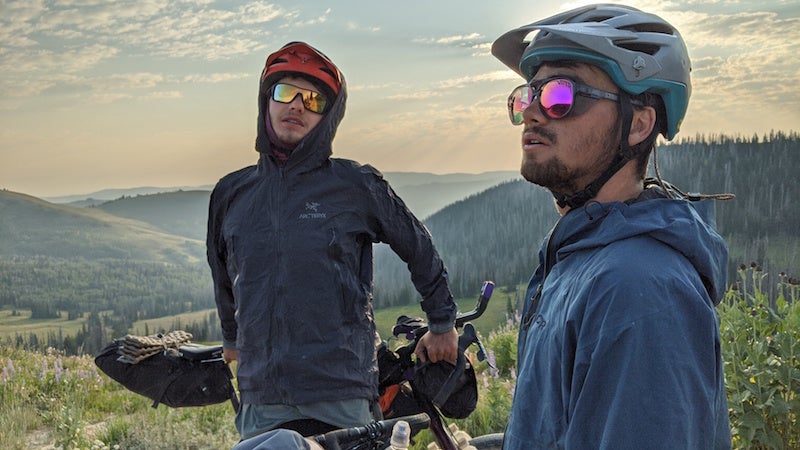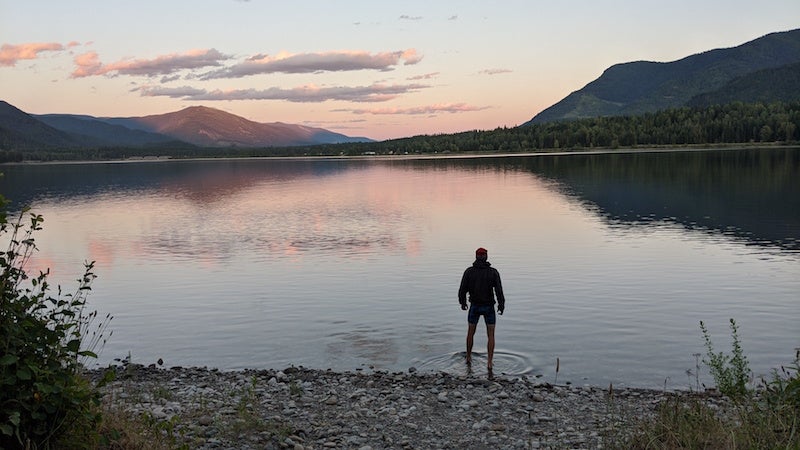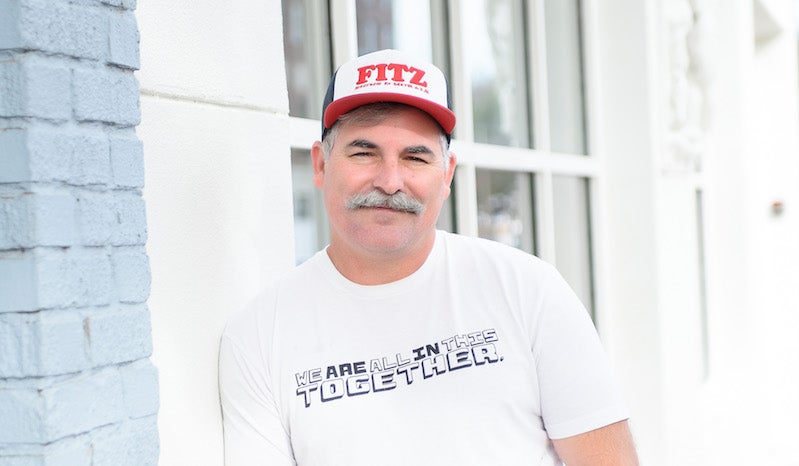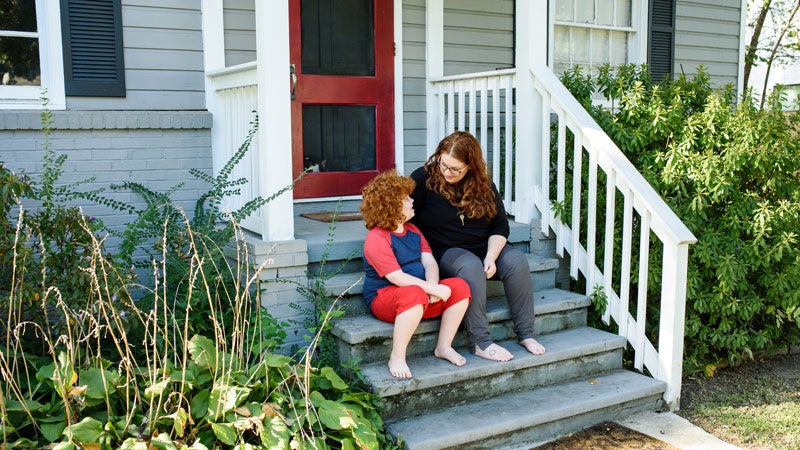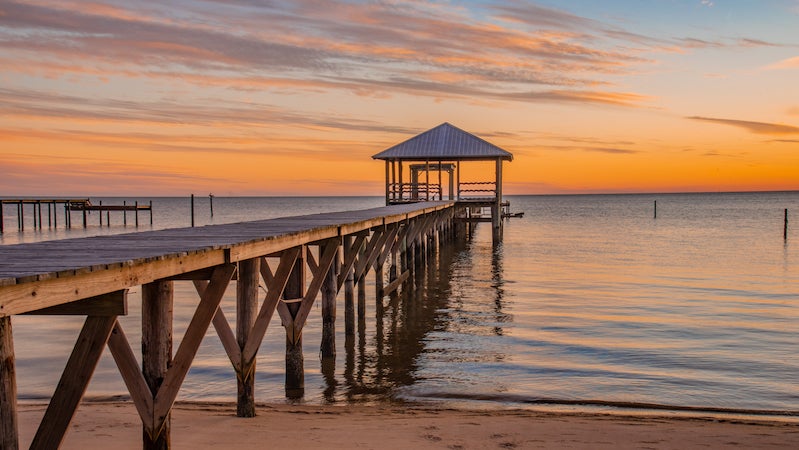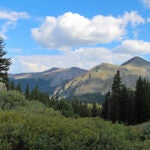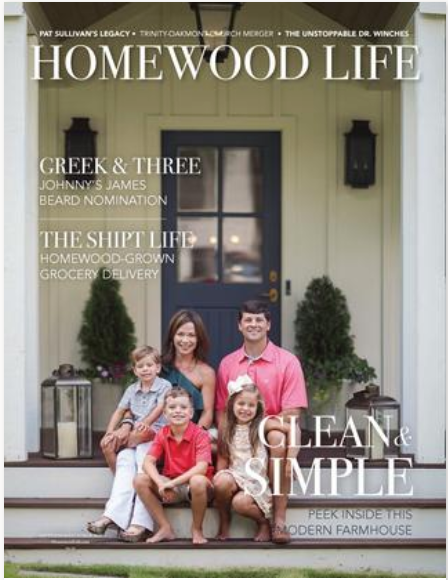Why would you bike from Canada to Mexico on gravel roads in 34 days? The five Homewood High School grads who did it this summer chalk it up to what they call Type II fun. As they define it, Type I fun is having fun in the moment. Type II fun is fun in retrospect but “just awful” in the moment. That and “We will argue as the day is long, all the time about everything,” says Thomas Gordon, a youth minister at All Saints Episcopal Church in Homewood. “Some people don’t enjoy that, but we all do.” “We challenge each other and that makes each other better,” adds Reed Whetstone, another member of the group.
Fittingly, Willis Wood—the trip’s mastermind who now lives in Colorado—likens the start of their friendship to an avalanche. All five who’d get on their mountain bikes at the Canadian border this summer met at Edgewood Elementary and were friends by the time they graduated from Homewood High School 2014—but their bond didn’t really snowball into what they have today until college.
The first idea for a trip for this year was Willis’s to buy an old broken down pontoon boat and take it down the Mississippi River. “But everyone hated that idea,” Willis says. “That idea was shot down extremely fast,” adds Adam Westfall, a biomedical designer who lives in Colorado. Willis threw out a Plan B, and C, and D, and finally by E or F everyone was on board.
The five friends looked into a more popular Canada-to-Mexico biking route called the Great Divide, but because of COVID restrictions they couldn’t access its starting point in Canada. Instead they opted for the Wild West Route. “It’s more rugged, more isolated, more elevation, more difficult…” says Ian Ross, a law student at the University of Alabama. “More fun,” Willis chimes in.
Once they set off, the friends didn’t arrive at the first “real” bike shop until Ketchum, Idaho, 850 miles into the trip. By then Thomas had procured a temporary replacement shifter from the garage of a small town retired mechanic, which fortuitously broke 10 miles from Ketchum. And that’s just the start of their tales from the trip.
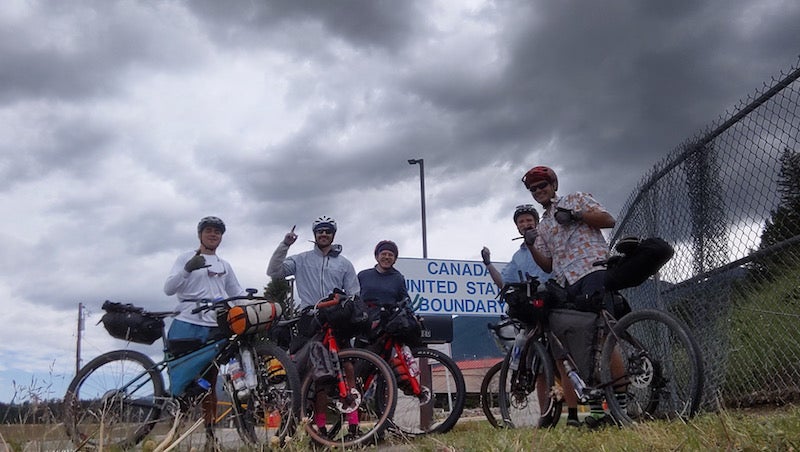 The Time Ian Got Airlifted Out
The Time Ian Got Airlifted Out
Six hundred miles into the trip, the friends found themselves in one of the most isolated places in the lower 48, the Magruder Corridor in Idaho. They estimate the closest town was 70 miles in either direction, and it likely only had a bar and post office. Ian admits mountain biking and the rigor of the trip was getting to him by that point. (“If anything I was there because I did the Appalachian Trail and know about camping and what good snacks to buy at the grocery store,” Ian says. “Which is more important than you might think,” Willis adds.)
And so it was biking down a mountain that Ian crashed and dislocated his elbow. “It was excruciating pain, the worst pain I’ve ever felt physically,” he recalls. Moments later Willis and Adam were “hot on the scene” putting their backcountry skiing know-how to use. Willis hit the button on a satellite device that can send an SOS message regardless of cell service and watched his friend’s vials.
Two hours later, a helicopter arrived and took Ian to a hospital. That was the end of the trip for him. “The worst pain of the whole thing was the sense of failure and defeat, and I spent three days in the hospital reconciling with it,” he says. “Willis kept sending me videos of majestic scenery as I sat on the couch.” But as Adam told Ian, “If you are succeeding in all your adventures, you are probably not pushing hard enough.”
The Time They Biked in a Flash Flood
Five days after Ian was airlifted out of the forest, the four remaining friends encountered a torrential storm. “There was a lightning bolt three car lengths away from me, and I thought I was going to die,” Reed recalls. The water was so deep it sank their bike pedals, so they had to wade through the washed-out road. “It was brutal,” Adam remembers. “We got into town and said, ‘We need beer and a hotel!’” That would be one of three hotel rooms they slept in the whole trip—after cycling 45 miles instead of their typical 80 that day.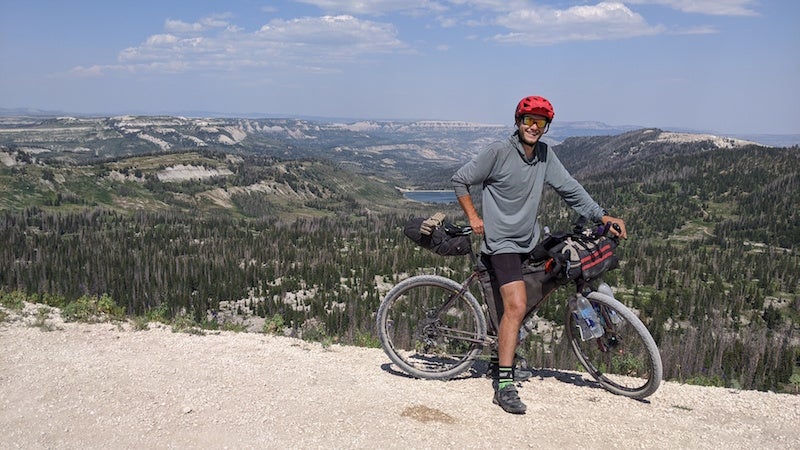
The Time They Carried Their Bikes Through the Grand Canyon
Originally the plan had been to take a route in Arizona through Navajo property, but because the area was hard hit by COVID, the three remaining friends (Adam had left for a new job) realized in Utah that that wouldn’t be an option. That left two choices: bike 200 miles of highway around the Grand Canyon, or put their bikes on their backs and hike through the canyon. They thought the hike would be 13 miles, but it was actually only 13 to the Colorado River and another 13 back up; their only footwear options were flip flops and bike cleats.
“How are we doing this? This could not go well,” Thomas recalls thinking at the prospect of the hike. Reed says he was a pep talk away from not doing it. But Willis said it was going to be amazing. “I have an incredible false optimism about things I shouldn’t,” he admits. And so after cycling 70 miles one day, they arrived at the canyon rim around 7 p.m., each strapped a 70-pound bike on their shoulders with webbing, and they hiked down the north rim of the canyon until 4 a.m. Next came two hours of sleep before the final hike down to the Colorado River as 115-degree heat set in.
Reed and Willis finished the 13-mile hike back up the canyon 26 hours after they started, meeting Thomas (who opted to take a shuttle instead) at the top. Along the way, the webbing ripped into their shoulders and cut off circulation to Willis’ left leg—what he calls “really interesting Type II fun.” They biked 60 miles the next day. 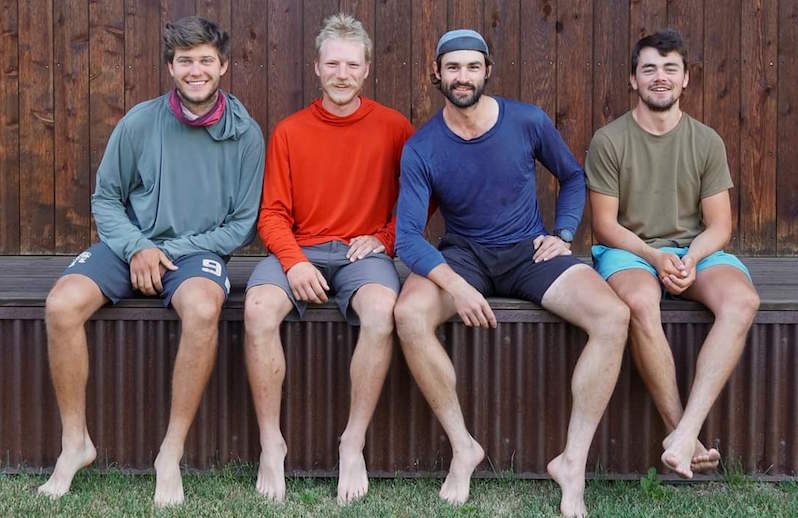
The Time They Encountered Trail Magic
Outside Salina, Utah, the group was preparing to find a place to camp for the night when a woman pulled up in a Polaris four-by-four, asked where they planned to sleep and offered her home—which happened to be an animal sanctuary. The travelers woke the next morning to greetings from around 60 bunnies and a bunch of chickens. Inside the house they met a baby pig, and that’s not even counting around a dozen dogs plus peacocks, goats and sheep on the property. “She gave us food and let us shower,” Thomas recalls. “She was very, very kind.”
That was the friends’ most notable instance of “trail magic” that’s common on routes like the Appalachian Trail when someone provides an expected gift or service. Other times a “dude on a motorcycle” offered them all Busch Lights, and in Montana they passed a stand with water and snacks for people on the trail—far fewer instances than on the AT where Ian says you can get three to four trail magics a day because so many people are on it.
The Time Willis Got a Trashed Seat
Adam is a professional downhill longboarder (who has placed seventh in the world at that), so when they came across a skate park in Evanston, Wyoming, he took his bike on it, fully loaded. And so did Willis. Only Willis slammed at the bottom and lost his performance bike seat. They were about 200 miles from a bike shop at the time, so Willis checked Walmart and ended up taking a seat some kids offered him from a bike that had been thrown away. But, as he will tell you, “You can’t ride a bike 85 miles standing up…. Butt sores are a very real thing, and riding a seat like that certainly didn’t help.”
The silver lining to the story came at a bike shop in Park City where they ended up sharing their story, and they sold Willis a demo seat for $30. Three people they shared their story with at the shop donated $100 each to the GoFundMe for the Crisis Center Birmingham that tied to their ride.
By the time they reached the US-Mexico border, each friend was in fact still living. But more notably, they’d chased an adventure and hope to inspire others to do the same. For these five, life is an adventure that this was just a chapter of. There’s certainly no telling what’s to come next.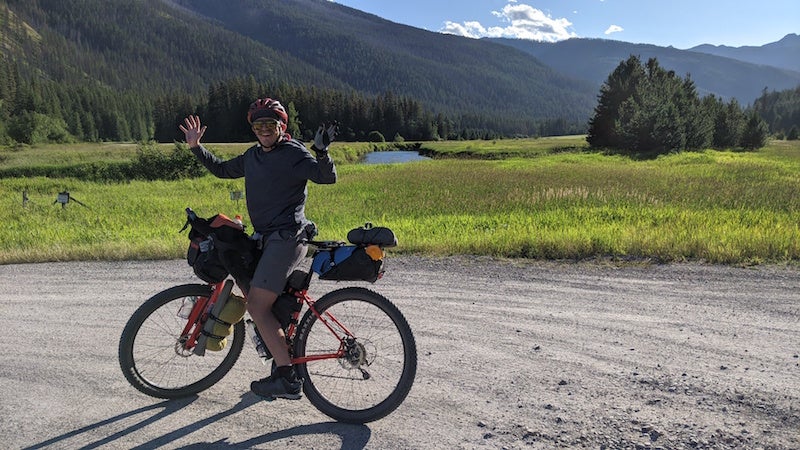
A Greater Purpose
After learning suicide hotline calls were up 50 percent in the pandemic, the group of friends wanted to give back in some way with their bike trip and decided to fundraise for the Crisis Center Birmingham through a GoFundMe page. “Right now donating to it is more important than ever because of coronavirus increasing loneliness and isolation and the new civil rights movement that’s going on,” Ian says. The friends say they were amazed by the support they saw as their initial fundraising goal of $5,000 was reached in one week, with donations coming in from all kinds of people including Homewood High School classmates they hadn’t talked to in a long time. “It makes you realize how strong a community really is,” Adam says. To learn more about the Crisis Center or donate, visit crisiscenterbham.org.

